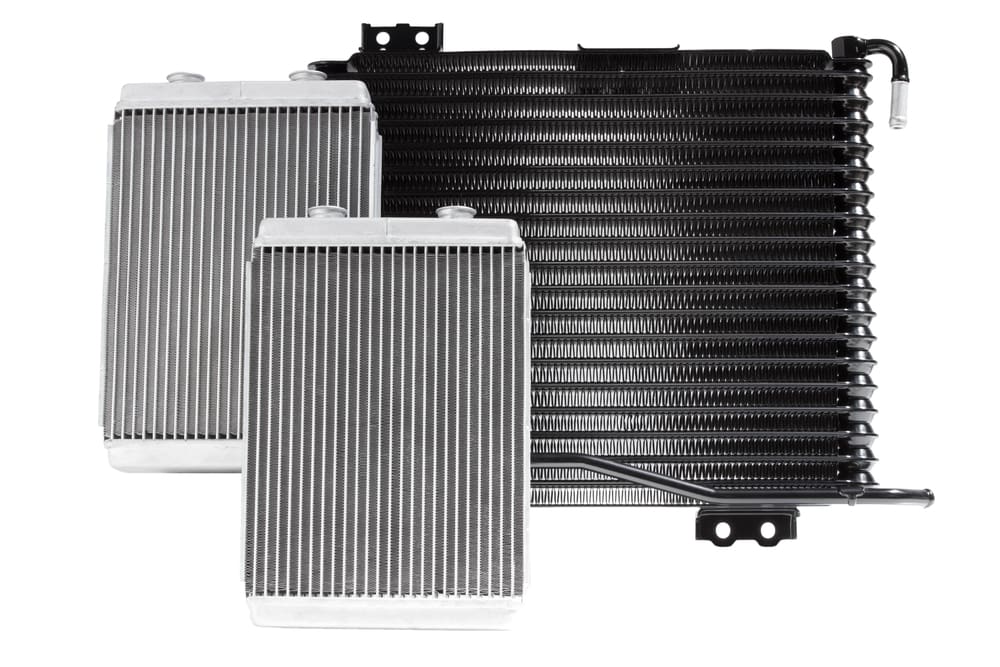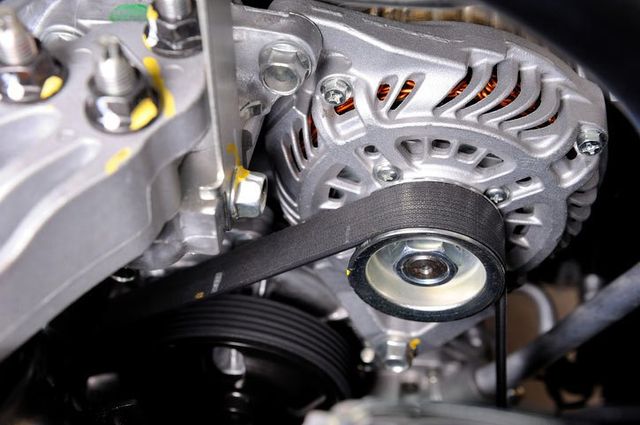What is Code P0420
Code P0420 is a diagnostic trouble code indicating that the catalytic converter is not functioning efficiently. It suggests the converter’s performance is below the threshold for optimal emissions reduction.
Understanding code P0420 is crucial for maintaining your vehicle’s health and ensuring it passes emissions tests. This code activates the check engine light when your vehicle’s secondary air pollution control system, particularly the catalytic converter, doesn’t reduce exhaust gases as designed.
The presence of this code often points to issues within the exhaust system that can range from a faulty catalytic converter to minor problems like exhaust leaks or sensor malfunctions. It’s essential for car owners to address code P0420 promptly to prevent further damage to the vehicle and keep it environmentally compliant. Regular maintenance and checks can help catch such problems early, ensuring that your car runs efficiently and maintains its resale value.
Introduction To Code P0420
Code P0420 signifies a malfunction in the catalytic converter’s efficiency, a critical component of a vehicle’s emission system. This diagnostic trouble code often triggers a check engine light, indicating potential issues with the catalyst system or associated sensors.
Code P0420 appears when the car’s computer detects a problem with the catalytic converter’s efficiency. This part of your vehicle is critical for reducing exhaust emissions. When the code triggers, it signals that the converter is not working as intended, potentially due to an internal fault. Understanding this code early can save you from more severe issues down the road.
Common Symptoms Of The Code
- Check Engine Light: This light on your dashboard is often the first sign.
- Rough Idle: The engine may shake or idle unevenly.
- Reduced Fuel Efficiency: You might notice a drop in miles per gallon.
- Unpleasant Smells: A failing catalytic converter can produce a sulfur-like smell.
Potential Vehicle Performance Issues
Ignoring Code P0420 can lead to notable declines in vehicle performance. Here are potential consequences:
| Performance Issue | Possible Outcomes |
|---|---|
| Power Loss: | The car might struggle when accelerating or going uphill. |
| Increased Emissions: | Higher levels of harmful gases released into the atmosphere. |
| Engine Damage: | Unchecked issues may cause long-term damage to engine components. |

Credit: www.aa1car.com
Exploring The Causes Of Code P0420
Code P0420 signals a problem with your vehicle’s catalytic converter efficiency. This can come from various issues. Understanding these causes helps fix the code faster. Let’s explore the likely culprits behind Code P0420.
Failed Catalytic Converter
The catalytic converter is core to reducing exhaust emissions. It can fail over time. Here are signs and reasons:
- Contaminants: Certain substances like antifreeze or motor oil can poison it.
- Physical damage: Bumps and impacts can break it.
- Wear and tear: Converters typically last 10 years before efficiency drops.
Diagnose with a reliable mechanic. Early detection may save money and prevent more damage.
Malfunctioning Oxygen Sensors
Oxygen sensors measure exhaust gas oxygen levels. They tell if the air-fuel mix is rich or lean. Here are common issues they face:
- Old age: Sensors wear out over time.
- Oil or coolant leaks: These can coat and damage the sensor.
- Faulty wiring: Broken wires can send wrong signals.
These sensors must work well. If not, they trigger the P0420 code.
Exhaust System Leaks
Leaks in the exhaust system change pressure and temperatures. This affects the catalytic converter. Look for:
- Rust or holes: Exhaust parts can rust over time.
- Cracked welds: Weld points can fail and leak.
- Loose components: Vibration can loosen parts.
An exhaust leak is a serious concern. It may lead to unsafe driving conditions. Check with a professional if you suspect leaks.
Diagnosing The Issue
When your vehicle’s check engine light turns on, it’s essential to uncover the root cause. If you’ve received a P0420 trouble code, your car’s computer believes the performance of the catalytic converter is below expectation. Proper diagnosis ensures you don’t overlook a component failure or spend on unnecessary parts.
Reading The Code Using An Obd-ii Scanner
Start by connecting an OBD-II scanner to your vehicle’s diagnostic port. This tool reads diagnostic trouble codes (DTCs) stored by the car’s computer. Follow these steps:
- Turn on the ignition without starting the engine.
- Allow the scanner to power up and follow its prompts.
- Locate the P0420 code in the list of DTCs.
Note the freeze frame data too. It provides details on engine conditions when the code set off.
Visual Inspection Of The Catalytic Converter
Next, visually inspect the catalytic converter. Check for signs of damage or wear. Look for:
- Rust or corrosion
- Dents or cracks
- Discoloration due to overheating
Also, inspect the exhaust system for leaks or damage. Make sure exhaust hangers are intact. A compromised exhaust can trigger the P0420 code.
If visible inspection passes, further examination by a professional might be needed. They can check for issues that are not easy to spot. These include internal damage or an inefficient catalytic converter.

Credit: www.youtube.com
Repair And Solution Pathways
When the dreaded Check Engine Light turns on and diagnosis reveals Code P0420, it points to issues with the vehicle’s catalytic converter system. Specifically, this error code signifies that the catalytic converter is not functioning at peak efficiency, often due to other underlying problems. Let’s explore the repair and solution pathways to address this fault code effectively.
Fixing Faulty Oxygen Sensors
Oxygen sensors play a vital role in your car’s exhaust system. They monitor the oxygen levels in the exhaust gases. Malfunctioning sensors can send incorrect data to the car’s computer. This error can trigger Code P0420. A straightforward solution involves:
- Testing both the upstream and downstream oxygen sensors.
- Replacing sensors that display signs of failure.
- Ensuring the new sensors are of OEM quality or better.
Replacing The Catalytic Converter
If the oxygen sensors are in good working condition, attention turns to the catalytic converter itself. This vital component reduces harmful emissions. Signs that it may be failing include:
- Decreased fuel efficiency.
- Reduced engine performance.
- A sulfur or rotten egg smell from the exhaust.
Replacement steps include:
- Selecting a high-quality replacement converter.
- Professional installation.
- Ensuring all associated sensors and exhaust parts are checked.
Addressing Exhaust Leaks
Exhaust leaks can falsely trigger Code P0420 by affecting sensor readings. Detecting and fixing leaks is crucial. Repair steps often involve:
- Thoroughly inspecting the exhaust system for leaks.
- Sealing or welding any identified leak points.
- Testing the system to ensure all repairs are successful.
Preventive Measures And Maintenance Tips
If your vehicle flashed the dreaded code P0420, it means your car’s catalyst system efficiency is below threshold. Keep your car away from this error with proper care. Here’s how to maintain your ride and keep that code at bay.
Regular Check-ups For The Exhaust System
Your exhaust system plays a huge part in your car’s overall health and efficiency. To prevent issues like P0420, schedule check-ups for your exhaust system. This can highlight any potential troubles before they worsen. Proactive steps include:
- Checking the exhaust manifold for cracks or damage
- Inspecting the oxygen sensors to ensure they’re functioning correctly
- Examining the catalytic converter for signs of deterioration or blockage
Adopting Good Driving Habits
The way you drive can impact your car’s health. Good driving habits help maintain your car’s systems, including the exhaust. Simple changes make a big difference:
- Avoid short trips that prevent the car from reaching optimal temperature
- Use quality fuel to reduce deposit buildup in the catalytic converter
- Service your car regularly according to the manufacturer’s schedule
By following these tips, you protect your vehicle from future issues and improve its performance. Keep your car running smoothly and efficiently, and that code P0420 will be a thing of the past.

Credit: eeuroparts.com
Understanding Legal And Environmental Importance
Imagine your car as a guest at Earth’s dinner table. Just as we wouldn’t want a guest belching smoke, cars must respect nature’s rules. Code P0420 is like a secret sentence that your car’s computer shouts when something’s wrong with its way of digesting fuel. Keeping air clean is vital; it’s not just a nod to the law. We all share the air. Let’s unpack why this code’s a big deal for green skies and legal rides.
Emission Standards And Regulations
Emission standards are strict playbooks written to keep air clean. Your car has to play by these rules. They set limits on the naughty stuff cars can breathe out.
- Cut down on smog: Smog is no fun and makes cities cough.
- Protect nature: Trees and animals say ‘thank you’ when cars are clean.
- Keep skies blue: Blue skies beat grey. It’s like choosing a sunny day over a gloomy one.
Car code P0420 tells us when the car’s catalytic converter isn’t playing fair with these rules. It’s a crucial part of the car that scrubs bad fumes away. If it’s failing, it’s like breaking the air-quality law!
Impact Of Neglecting Code P0420
Ignoring code P0420 can lead to rough roads ahead, both for your wallet and our shared backyard, Mother Earth.
- Dirtier air: If the catalytic converter fails, it means dirty air for everyone.
- Fines: No one likes fines. Fix issues early to avoid them.
- Damage to your car: A sad car makes for a sad wallet. Other parts can get sick if this one’s not fixed.
So, fixing P0420 is like choosing to be a superhero for air. Keep your car healthy; keep our air fresh. It’s a win-win!
Frequently Asked Questions On What Is Code P0420
What Does Code P0420 Indicate?
Code P0420 indicates that the vehicle’s engine control module (ECM) has detected a problem with the efficiency of the catalytic converter on Bank 1. It suggests that the converter is not functioning as efficiently as it should be according to factory specifications.
Can A Faulty Oxygen Sensor Cause P0420?
Yes, a faulty oxygen sensor can trigger code P0420. The oxygen sensor monitors the levels of unburned oxygen in the exhaust, and if it malfunctions, it can provide inaccurate data, leading to an incorrect P0420 diagnosis.
How Serious Is The P0420 Trouble Code?
The P0420 code is moderately serious. While it may not cause immediate drivability issues, it indicates your catalytic converter is not working properly. This can lead to decreased fuel efficiency, higher emissions, and potentially more severe engine problems over time.
What Triggers A P0420 Code?
A P0420 code can be triggered by several issues: a failing catalytic converter, malfunctioning oxygen sensors, exhaust leaks, or engine performance problems like misfires. It generally points to poor catalytic converter efficiency.
Conclusion
Understanding code P0420 is crucial for maintaining your vehicle’s health. It signifies a problem with the catalytic converter’s efficiency. Early detection and resolution can save costly repairs. Remember, regular check-ups and swift action keep your car running smoothly. Drive smart, tackle issues head-on, and ensure a happy journey with your trusty vehicle.





